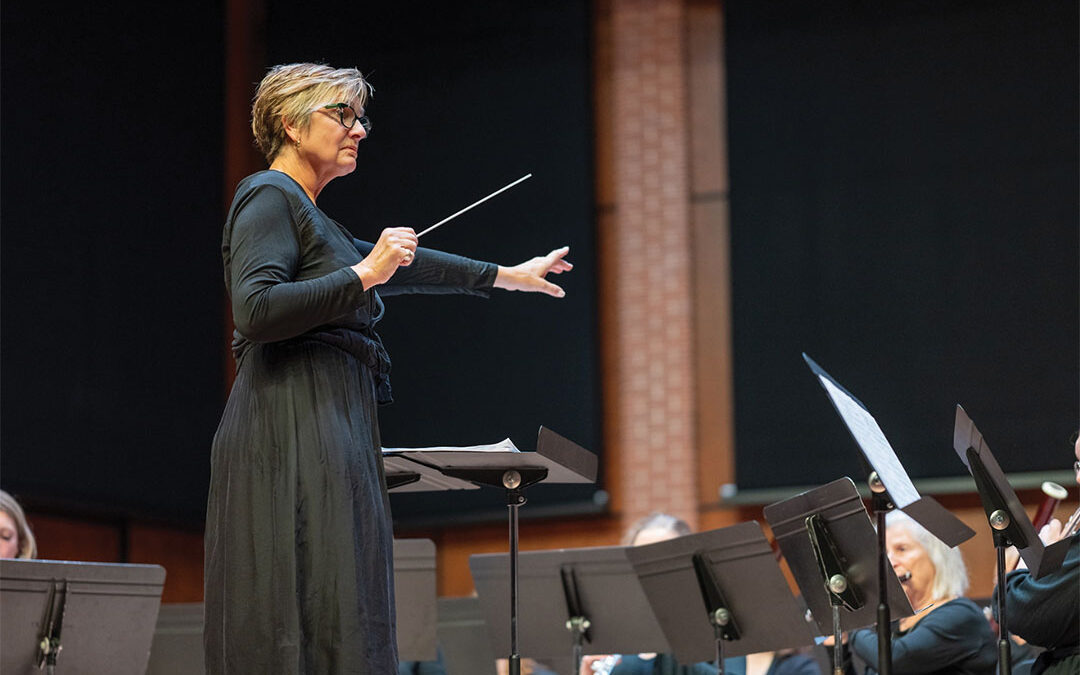
Charlene Roise is a leading expert on historic preservation. Photo: Tate Carlson
New book chronicles local lift bridge saga.
If there’s anything you’d like to know about the iconic Stillwater Lift Bridge, ask Charlene Roise. She wrote the book on it.
Roise, one of Minnesota’s leading experts on historic preservation and president of the Minneapolis-based Hess Roise and Company, a historical consulting firm commissioned by the Minnesota and Wisconsin transportation departments to write The Saga of the Stillwater Lift Bridge: A Preservation Case Study.
The bridge, connecting Minnesota Highway 36 and Wisconsin Highway 64, was listed on the National Register of Historic Places in 1989 as a rare surviving example of a vertical-lift highway bridge. It consists of seven fixed-steel truss spans 1,050 feet long in total, including the vertically lifting span, which is 140 feet long.
Traffic into Stillwater often backed up during busy times, and backups worsened whenever the bridge was raised. The new St. Croix Crossing bridge south of Stillwater opened to traffic on August 2, 2017. Repairs and restoration of the lift bridge—one of only two surviving, pre-World War II bridges of its kind—was originally expected to be complete by late June last year.
But spring floodwaters and the need for additional work on the lift span has delayed completion.
Roise lives in Minneapolis, but her Swedish immigrant great-grandparents, named Wigren, lived in Stillwater around the turn of the 20th century. Roise has a master’s degree in Preservation Studies from Boston University and was involved in the effort to save the historic bridge in the 1990s. She says, “It was kind of ironic I ended up writing the book for MnDOT.”
“When I went into it, I was vaguely aware that there had been other bridges there before 1931. But I wasn’t quite aware how long people had been working to try to replace it. Conflicts between motorists wanting to cross the bridge and boaters on the river had been going on for years. The process of raising the bridge to allow boat traffic to pass was highly regulated, under the jurisdiction of the Army Corps of Engineers or Coast Guard, at different points in time,” she says. She considers the eventual compromise “pretty masterful. In preservation, you have got to compromise,” she says.
Roise was also a member of the team that produced the visual quality manual for the St. Croix Crossing, for MnDOT and WisDOT. Federal funding was allocated for preliminary planning for the lift bridge. “I was on the team to figure out what to do with that money and how to do it,” Roise says.
In addition, Roise’s partner, Jeff Hess, wrote the National Register historic nomination for the bridge. “So, we have a lot of files on the bridge,” Roise explains.
She spent several years working on the book and finished it late 2018. Roise worked on the book as part of her job. She dealt with some pressure to get it done in time for the ribbon-cutting to open the new bridge built to replace it.
“I would take a few days to just go and hide when I needed to make progress on the book,” she says. “I spent quite a while at MnDOT which had boxes of material about bridges, a wonderful resource. Writing the book was very stressful but a lot of fun. I’m really proud of how it came out. I think it’s a really important story and a good case study for how a complex project with a lot of different parts can eventually happen, what some of the pitfalls are and ways to come to a solution. It really takes some people who are almost heroic to weed through it all; some real heroes came out in the book.”
One of those heroes was former MnDOT commissioner Richard Braun, who lent his experience and expertise to the process of coming up with a solution. Two Minnesotans were influential at the federal level: Richard Moe, a former chief of staff to senator and vice president Walter Mondale, who led the National Trust for Historic Preservation, and Roger Kennedy of the National Park Service.
“There was a long list of agencies involved, at the local state [both Minnesota and Wisconsin] levels. By the time the process was finished, and a decision had been made, it took President Obama’s signature on a special bill to get it done,” she says.
The print version of the book can be purchased from Minnesota’s Bookstore; it can also be downloaded on MnDOT’s website.






















